My Ten Most Used Apps to Become Fluent on the iPad
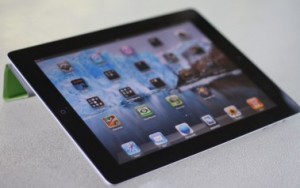
It is no secret, that I enjoy my iPad tremendously. I even proclaimed, now and then, that I love it! From the beginning, I approached the iPad with one goal in mind: I wanted to become fluent in using it. There is a distinct difference, in my opinion, between being skilled, literate and fluent in the use of an iPad.
Fluency on the iPad, like language fluency, does not necessarily come natural to most people. Unless you grow up in a language, as your mother tongue, and you acquire speaking this language unconsciously as a baby and child, it will require an effort (to various degrees) on your part to learn to become fluent in that language. Becoming fluent on the iPad requires a conscious effort and time as well.
I see too many educators (administrators and teachers), who with an iPad at their disposal, are using the iPad:
- as a paper weight on their desk, leaving them in their car or forgeting the device at home
- for playing games only
- to hand it over to their kids at home to play with
- as an after-thought
- as a “translation” tool (figuring out how to do something the same way they are used to doing on their desktops or laptops)
- and are frustrated that is does not come easy and natural to them
- and are not putting in the time (consistently) to become skilled to gain iPad literacy and fluency
I view the iPad, not as a replacement for my laptop, but as a:
- Highly mobile device
It fits in my purse, it goes with me everywhere I go. - Personalized device
The iPad gives me a user experience that fits MY learning, reading, writing, visualization and organizational style. - Customizable device
I am in charge of finding, adding and deleting apps on my iPad. I create a device with the perfect functionality that fits my needs and objectives for my usage. I am able to modify apps, connect to other social media platforms I use or specify what content (through apps) I want displayed. - Consolidation device
It is invaluable to me to have my most important information in ONE place. Handwritten or typed notes, PDF file, images, or presentations files are not scattered on different devices, in analog or digital form. I have one device to read, write, consume, create, archive, retrieve, etc. - Productivity device
The iPad allows me to, not only consume, but to create. I am particularly fond of apps that help me curate and organize information, remix and combine different media, write, record, visualize, share and disseminate my “creation” with my network via a variety of venues. - Reading device
The iPad has completely changed the way and how much I read (My World of Reading Part I and Part II). All the “traditional” books I am currently reading are in one place. New forms of reading platforms, such as RSS readers, Tweets, blogs, etc. make up the bulk of my reading these days. My iPad let’s me easily return to, refer to, quote from, connect with, favorite, share and disseminate my readings. - Annotating device
“An annotation is a note that is made while reading any form of text”. From highlighting to screenshooting, to collaborating with others, the iPad allows me to interact with text like I was not able to before.
Consider reading about the possibilities from Mike Fisher’s and Jeanne Tribuzzi’s guest post of Annotexting.
I want to share my favorite apps that help me be a fluent (-ish) user of the iPad. As always, the recommendations come from personal experience and just intended as a starting point to be tweaked by interested readers. But I challenge YOU (yes, YOU), who has their iPad collecting dust or being merely used as a digital reading device to step it up, and make the effort to become fluent. The learning process alone is worth it.
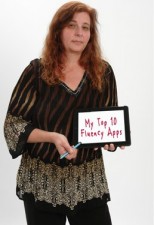
1. iThoughts HD- Productivity, Personalized
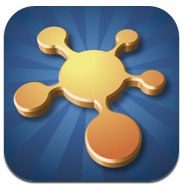
I use this mindmapping app constantly to take notes, summarize books or articles, prepare a structure for workshops or upcoming blog posts.
Tools and ideas to transform education. Sign up below.
2. Noteshelf- Productivity, Personalized, Annotating, Consolidation
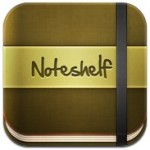
Noteshelf allows me to throw out any notepads, individual pieces of paper, scribbled notes during a phone call, to-do-lists and consolidate them ALL in one place, that is searchable, printable, email-able
3. GoodReader- Productivity, Personalized, Annotating, Consolidation, Reading
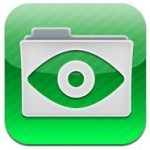
GoodReader is my hub for all things PDF. I can upload, download, organize and store PDfs from the web, PDFs I created. Invaluable when on the road, in the hallway or in the classroom planning with a teacher and quickly wanting to share a how-to-guide, research article or other document
4. iPhoto- Productivity, Consolidation, Personalized
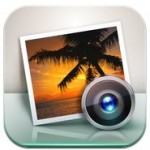
I have an increasingly large collection of work related photos, info-graphics and visuals. Again, the ability to house them in one place, edit , organize them into content related journals and albums for quick retrieval and dissemination is invaluable
5. Twittelator- Productivity, Reading, Annotating

Twittelator is one of many iPad Twitter apps. What I like about Twitterlator is that it allows me to easily switch between my different Twitter accounts (I tweet as well for Curriculum21, The Martin J. Gottlieb Day School and edJEWcon). I also like their clean graphic interface and the easy way to check out my new followers in order to add them to my PLN.
6. Mobile RSS- Productivity, Reading, Annotating
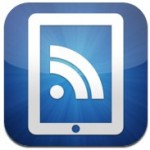
Mobile RSS is my preferred RSS reader. I imported my Google Reader feeds and use the app exclusively to stay up to date on the 1000+ subscriptions from sources, such as blogs, news, discussions, etc. I like the clean interface as well as the ability to tweet, email, send to Evernote or Delicious and annotate any of the items directly in the app.
7. Zite- Productivity, Reading, Annotating, Customization, Personalization
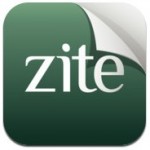
Zite is a magazine that you can customize with news sections. You can link your personalized magazine sections to Twitter, Google Reader, Delicious or Read It Later. I use Zite a lot to disseminate relevant links and resources to my PLN via Twitter.
8. FlipBoard- Productivity, Reading, Annotating

FlipBoard is another magazine style RSS reader. The reason, I especially like FlipBoard is its visual element. I added a few specific Twitter feed hashtags, search keywords and usernames to highlight them outside of my main Twitter feed. I can directly tweet or retweet from within the app, as well as share a link via a variety of formats.
9. Keynote- Productivity, Consolidation
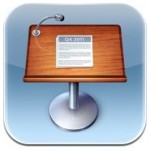
With Keynote, I am able to create presentations, but also import keynote files created on my laptop. It serves as a backup when I travel to present, but also as a quick and easy way to work on presentations, re-arrange slides and practice timing.
10. Explain Everything- Productivity, Annotation

Explain Everything is a Screencasting app. It comes in very handy, if I need to create a quick video, explaining a process, a screenshot with explanation, annotate web pages and record my voice in addition.
Again, these are the ten most apps, I use on my iPad. They help me personalize my learning and productivity. What are some of the apps that you are learning with, apps that help you be fluent on the iPad?
